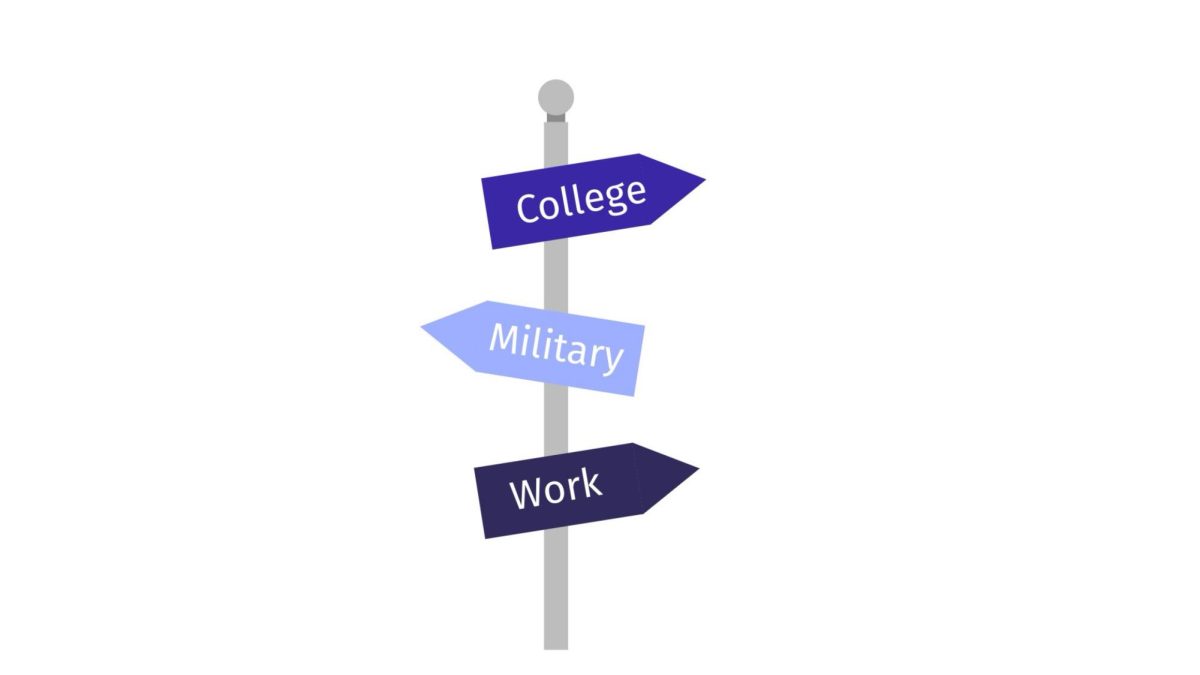College Outside the US
February 9, 2022
With college just around the corner for many seniors, here’s an option that’s not too late to think about: going out of the country. Many submission deadlines aren’t until the end of the school year, so you still have time to apply.
WHY APPLY?
Compared to many American schools, most schools around the world have little to no tuition. Many of these universities have international tuition that compares to that of in-state tuition in the US. For example, Germany offers free university to any student who applies, with the exception of the state of Baden-Württemberg.
The expected amount you would pay as an international student in the following countries (price varies per degree):
- Austria: $3,000 – 23,000
- Australia: $20,000 – $45,000
- Brazil: public – free, private – $2,000 – $10,000
- Canada: about $22,500
- Germany: free, excluding Baden-Württemberg
- Ireland: $9,850 – $55,000
- Mexico: $1,636 – $16,353
- UK: $13,900 – $27,830
To put this into perspective, American out-of-state tuition is on average about $25,650.
Aside from the incredibly cheap tuition options, studying all four years abroad will give you an opportunity to learn and experience new cultures.
WHAT COUNTRY TO CHOOSE:
Choosing what country you would like to spend the next four plus years in might seem daunting, there are many factors you will want to consider. Some of these factors might include family, your heritage, and studying opportunities.
If you are fluent in another language (ex: German, French, Italian, ect.), you might have more options open to you in terms of universities. If you aren’t fluent in another language and wish to study in English, that’s not a problem either. Although there are many English speaking countries, many schools whose country has a different dominant language also teach in English.
Some things to consider if you would like to study internationally would be things like if you have family that lived in another country you might want to visit, any family heritage or ties you have to other countries and even studying opportunities. Many different countries can offer different things per degree like more advanced field research.
APPLICATION PROCESS:
If you are a senior already on the Common App, there might not be much else you have to do aside from finding the right college. The Common Application already has 54 International universities on their application that you can easily submit your application. However, there are hundreds of more international universities out there, many of which you might have to apply for separately. But don’t worry, they really aren’t that much different from American college applications.
WHERE TO START:
Research should be your number one step. Finding a college that is a perfect fit is not always easy. Looking up colleges and making a list of the countries you might want to study in should be first.
Although this may sound obvious, your next step should be to research colleges in those areas. With non-English speaking countries, make sure that the university teaches–at least the classes you would like to attend–in English (unless of course, you are fluent in the local language).
Your final step is going to be applying, which might sound a bit scary. If you are using the Common App, you will most likely have to write a paragraph or so explaining why you would like to attend the school, what makes you qualified, etc. You will also have to fill out a spot in the App for your grades over the last three years (basically just copying down your transcript, which you can get from your counselor). After that, send off your application and wait to hear back.
Applying to a college individually might be a little trickier. Many college applications outside of America can be a bit funny, however, this should not stop you from applying. Usually, for these situations, the college will add something at the top to help you through this process, like instructions on how to fill it out (ei: what documents you need to upload, where to add your counselor and referrerie, and where to add on your writing supplements).
SCHOLARSHIPS
Once you have decided and landed on a certain college, the next thing you’ll want to look at is scholarships. Although the tuition rates are significantly less, scholarships will still help to lower that cost. Believe it or not, some international schools accept FAFSA. Although this is a great resource if you are staying in the country, it could also help you financially internationally. Make sure to research which school that you are applying to accept FAFSA. Although some specific ones do, most don’t.
If a school does not take FAFSA, don’t panic. Many college websites have a list of scholarships you can apply to that is specific to the school. There are also many different scholarships funded independently ranging from $250 – $10,000, it’s just a matter of research and applying.
IMPORTANT THINGS TO CONSIDER
Studying abroad and studying in another country for the entirety of your degree are two very different things. There are many things you have to consider like a student and work visa, your degree, travel cost and a new calendar.
If you are going to study all four years in another country, you will need to get a student visa. Student visas have a fee of about $260 depending on the country. You will have to get these a few months in advance of the school year, but you have to be accepted into a school in order to apply. To make money in another country, you will also need a work visa, however, student visa and work visas are raley given out at the same time, so that might be one thing you have to consider. Student visas are specific to each country, so more research may be needed. More information about international student visas here.
If you are wanting to study something along the lines of medical, dental, or law, studying in another country than the one you want to work in in the future is not the best idea. Law varies per country, so your degree won’t be valid across different borders. Medical and dental are more flexible, however some countries have laws about where or not you can practice if you studied in a different country, so that would be one thing to look up.
Travel costs are another big factor. Flights can be expensive if you are wanting to go overseas, ranging from $600- $1,000 both ways. Coming back for every break or holiday may not be financially possible, especially since many countries run on a different calendar than the US. They don’t celebrate holidays like Thanksgiving, so fall break is very different, and winter break might line up completely differently than the United State’s. School in many other countries begins in mid-september, but does not get out until late may through mid-june.
Overall, you are the only one who can determine if the benefits of a degree from another country is worth it. The task of simply applying is not that daunting when you look at it, and hopefully after reading this, you have a better idea how to do that and are able to have a better understanding of your options that are readily available to you. Here is a great resource to get started.








